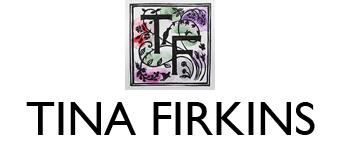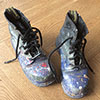Sketching with family at Lyveden New Bield, Northamptonshire
Do you have a special place that seems to beckon you when the sun is shining, somewhere you long to be when you have a day off from work or household chores, when you’re free to enjoy an escapade with your loved ones?
We have a favourite local place that all 6 of us are happy to head to, it’s Lyveden New Bield, an unfinished Elizabethan Summer house set in the heart of rural Northamptonshire.
It was designed and built for Sir Thomas Tresham in the shape of the Greek cross and covered in religious symbolism, in order to express his fervent Catholic faith. Sadly, it was never completed due to his death in 1605, family debt and his son’s connection to the Gunpowder plot.
The garden is one of the oldest in the country with mounts, moats, an orchard, woodland and a wildflower meadow.

Today, on this unusually glorious May bank holiday I have an opportunity to sketch in the sunshine as the children kick a ball around and play hide-and-seek. Cowslips are in abundance here, spattering the meadow with their yolk-yellow cheeriness, while on the horizon, they pale to a hazy lemon wash. Above me, the skylark’s melodious warble rises in the blue.
As I sketch the cowslips, I find myself thinking about their structure and formation; whether I could carve a successful cowslip lino block and would the resulting print work as a textile design? Also, what is the origin of the name ‘cowslip’? A bit of research is called for…
Some interesting facts about the cowslip:
- Latin name is Primula veris
- Cowslip means cow slop or cowpat as it was commonly found growing in cow pastures
- Cowslips were often strewn on church pathways for weddings and were included in May Day garlands
- Other folk names include Bunch of Keys, Key of Heaven, Golden Drops and Freckled Face
- The cowslip is the county flower of Northamptonshire, Surrey and Worcestershire



